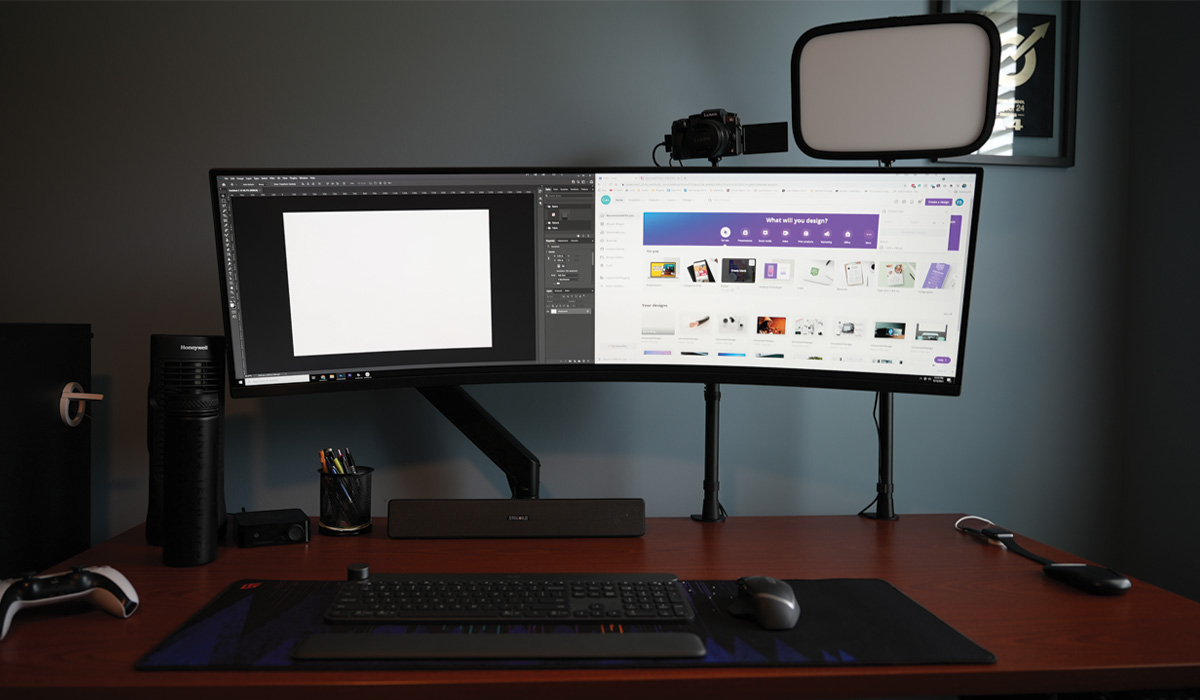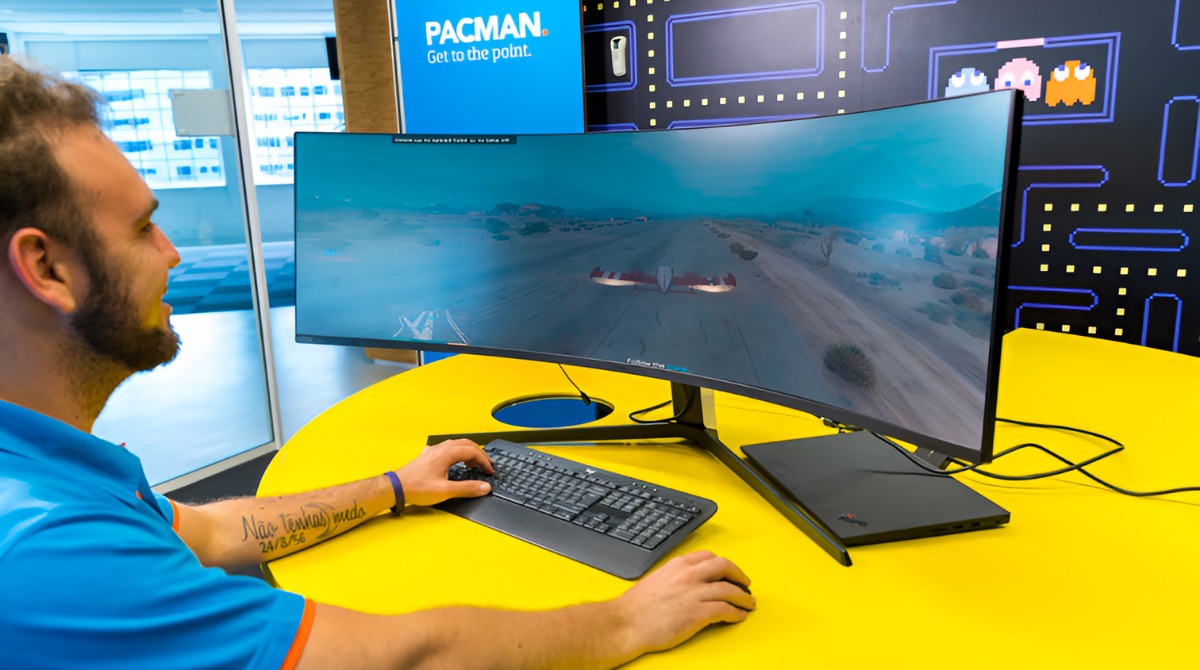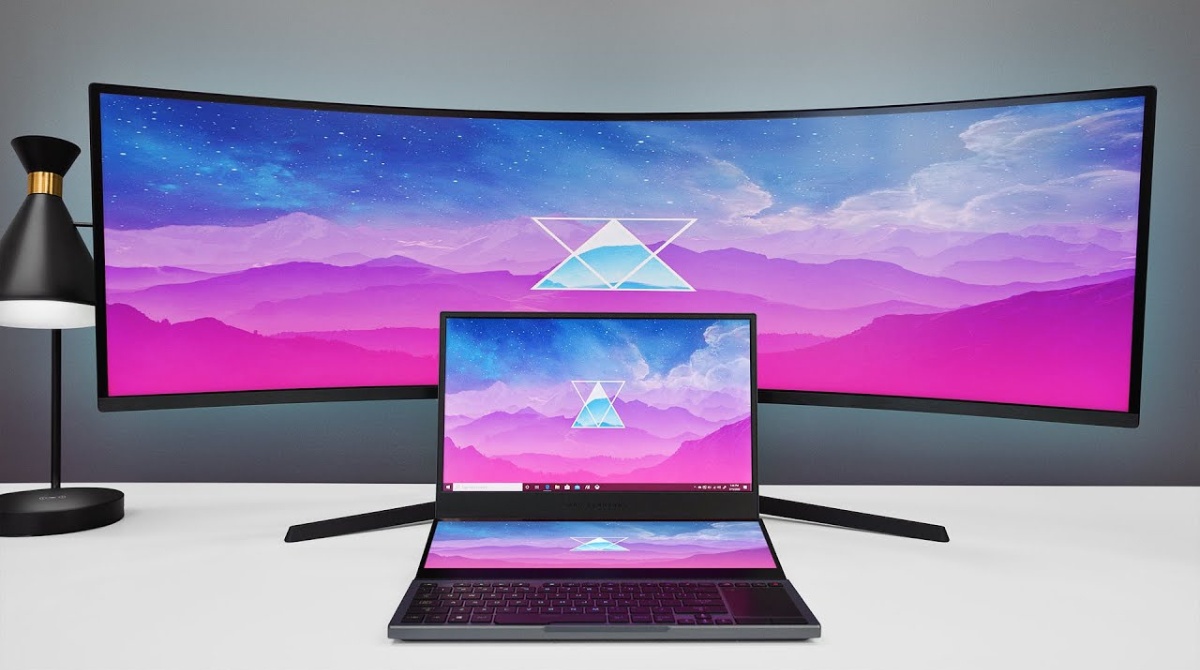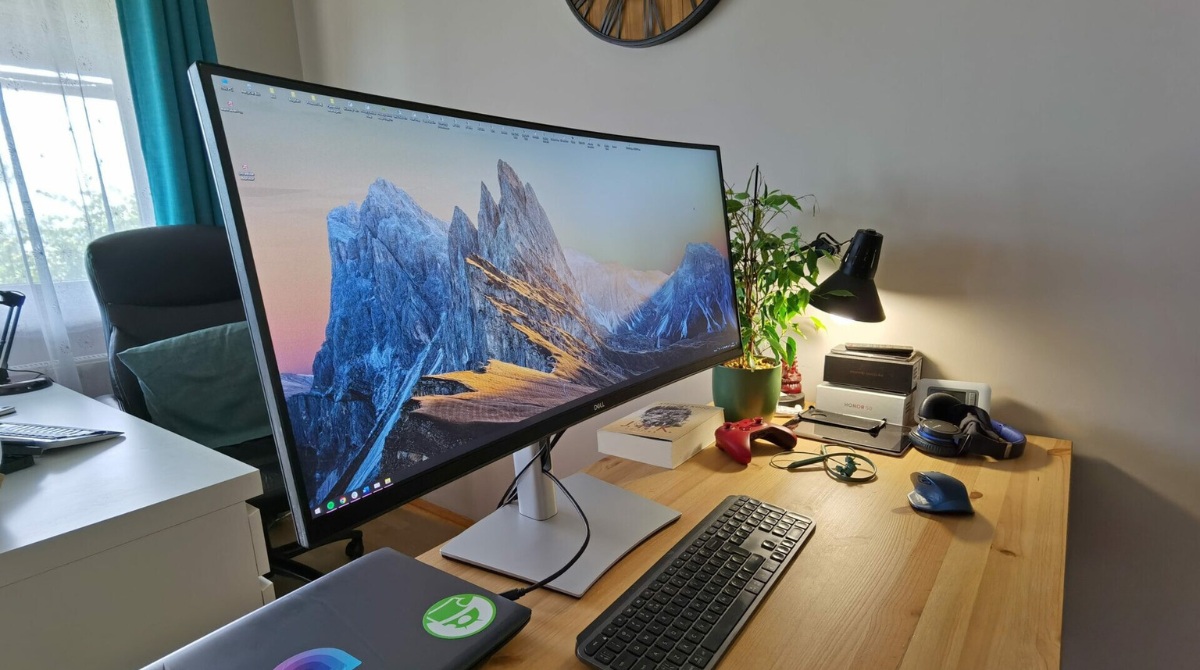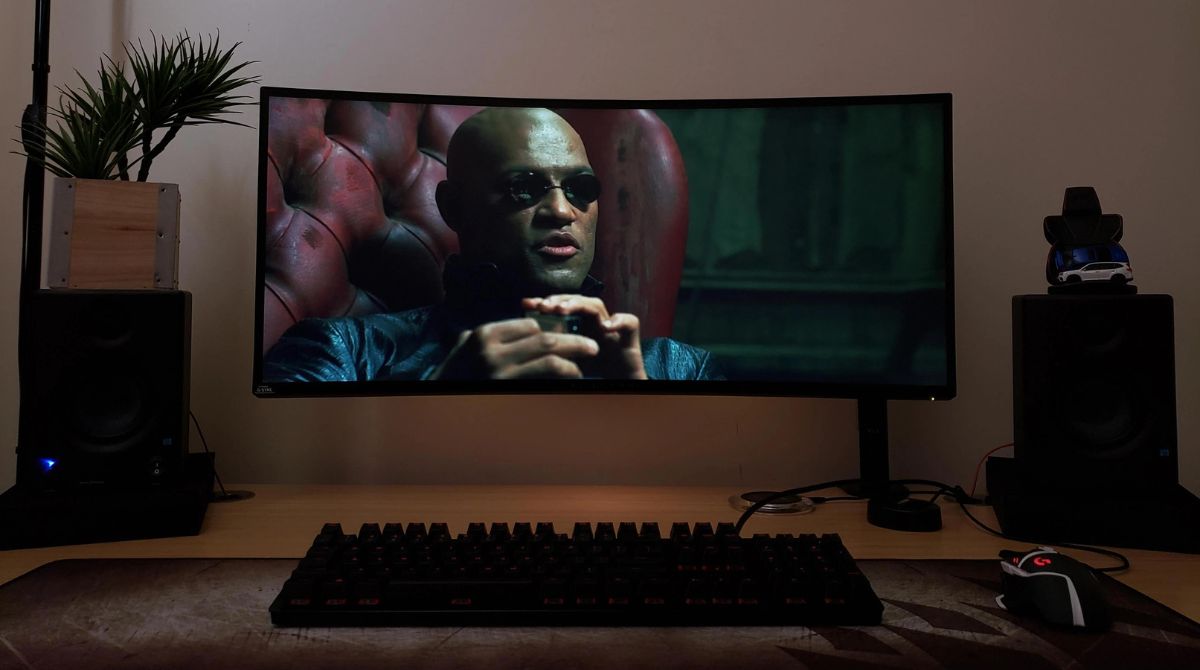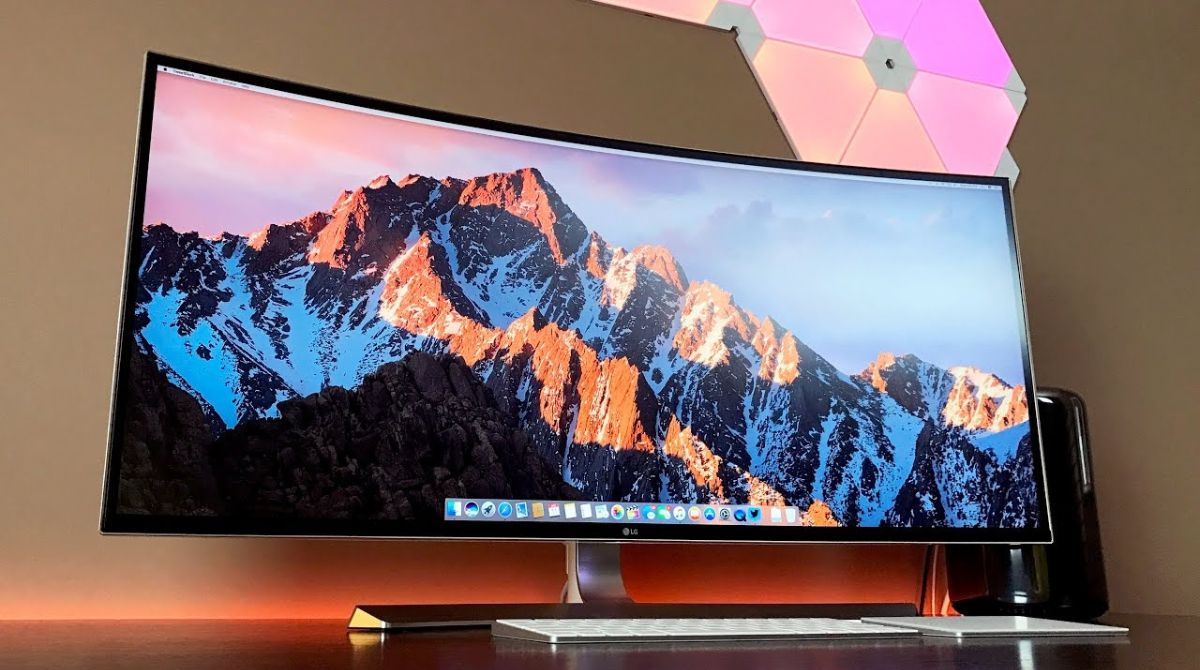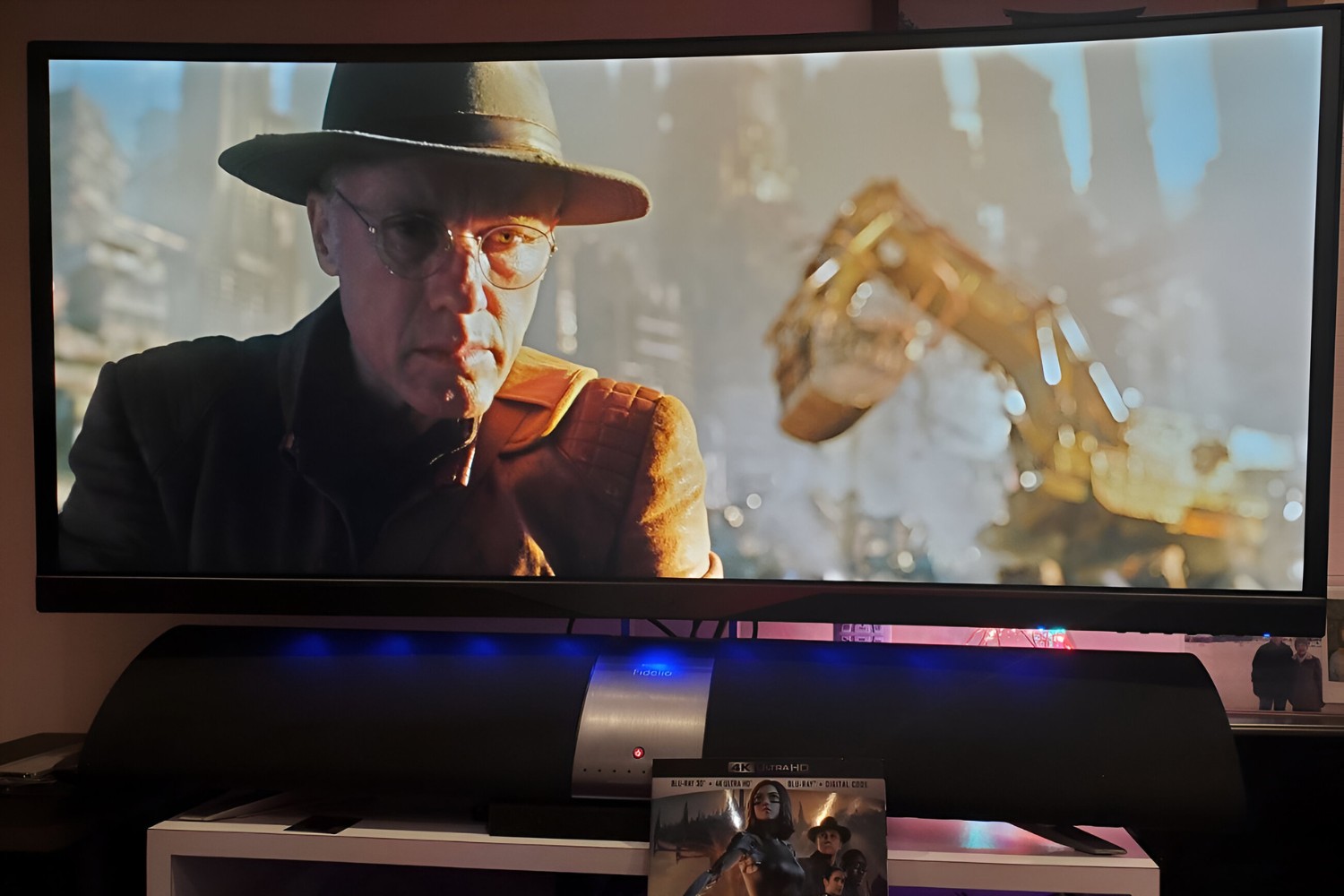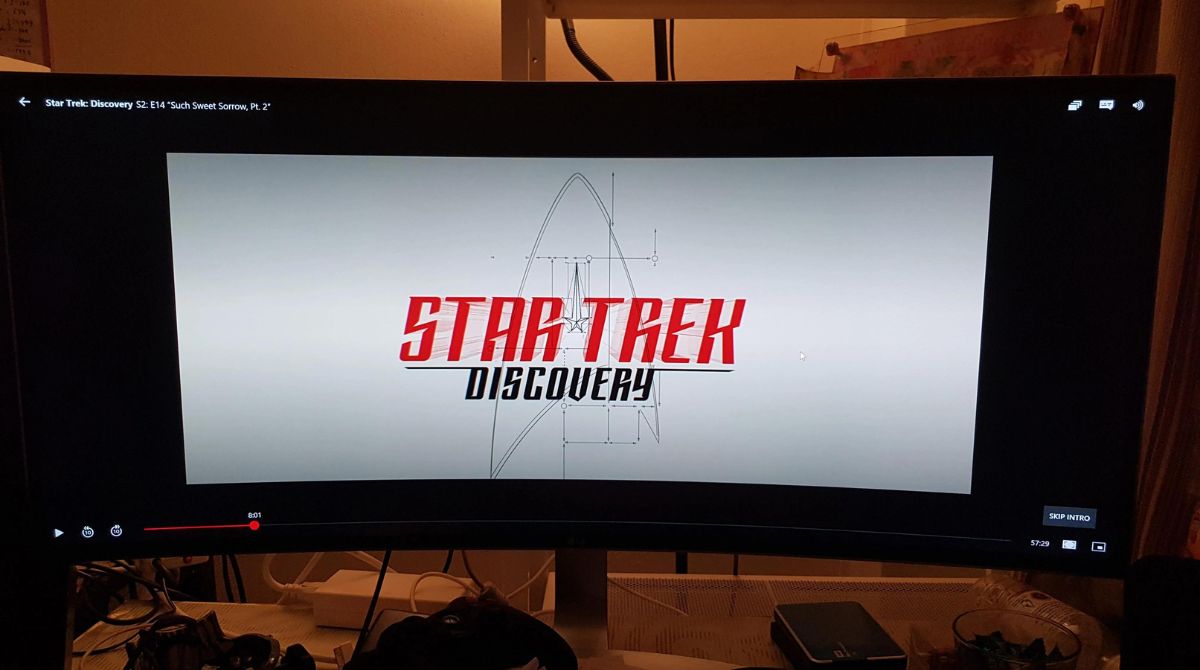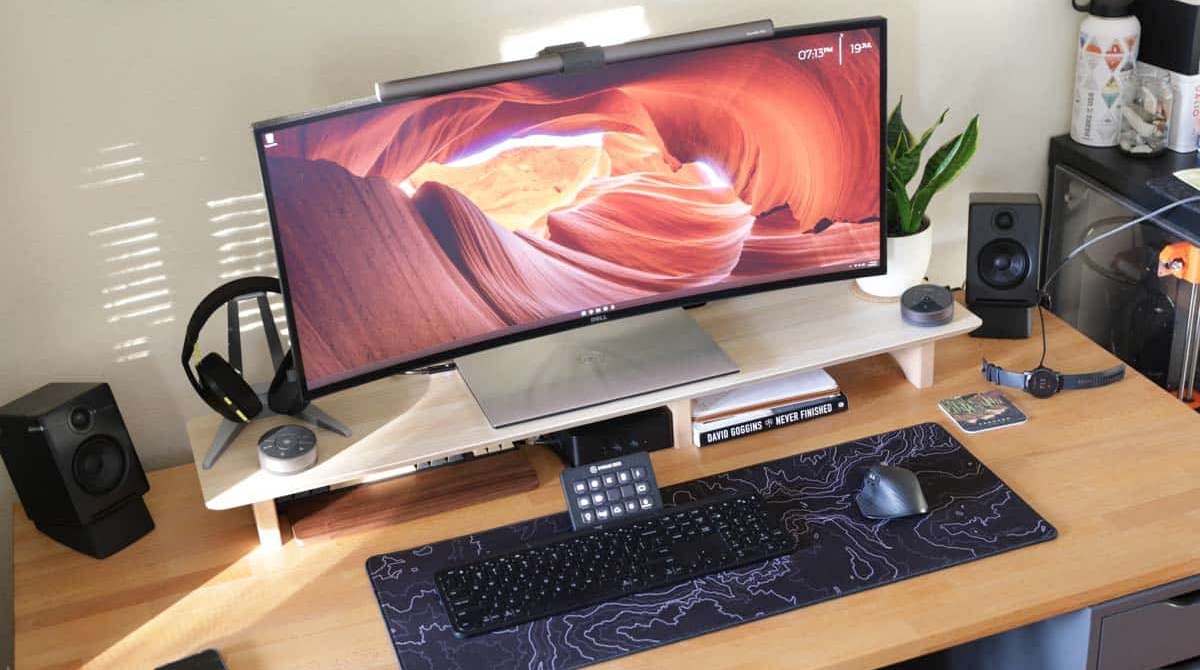Introduction
Ultrawide monitors are a popular choice for many computer users, as they provide an immersive viewing experience with their wide aspect ratios. However, when it comes to running full-screen programs on these monitors, users often encounter display issues. The programs may not scale properly or may get displayed with black bars on the sides, compromising the visual quality and the overall user experience.
In this article, we will explore common issues faced by users while running full-screen programs on ultrawide monitors and provide solutions to ensure that these programs display properly in windowed mode. With a few simple adjustments, you can enjoy your favorite games, multimedia, and applications on your ultrawide monitor without any display issues.
Understanding the unique aspects of ultrawide monitors and how to optimize full-screen programs can greatly enhance your computing experience. By following the steps outlined in this article, you will be able to make the most out of your ultrawide monitor and enjoy a seamless full-screen experience.
Understanding Ultrawide Monitors and Aspect Ratios
Ultrawide monitors offer a wider aspect ratio compared to standard monitors. While traditional monitors typically have a 16:9 aspect ratio, ultrawide monitors have an aspect ratio of 21:9 or even wider. This aspect ratio provides users with a wider horizontal viewing area, allowing for a more immersive and cinematic experience when watching movies, playing games, or multitasking.
The increased horizontal space provided by ultrawide monitors is particularly beneficial for tasks that require side-by-side viewing, such as video editing, graphic design, and data analysis. It allows users to have multiple windows and applications open simultaneously without the need for separate monitors, improving productivity and workflow efficiency.
However, it’s essential to note that not all content and programs are optimized for ultrawide monitors. Many applications are still designed to support the standard 16:9 aspect ratio, leading to display issues when running them on ultrawide monitors.
When running full-screen programs on an ultrawide monitor, the aspect ratio mismatch can result in black bars appearing on the sides of the screen, known as pillarboxing. This not only reduces the immersive experience but also leaves unused space on the monitor, negating the advantages of having an ultrawide display.
To overcome this, users often resort to running programs in windowed mode, resizing the program window manually to fit the screen. While this may solve the pillarboxing issue, it may also result in issues with scaling and distorted visuals, as the program may not adjust properly to the monitor’s resolution and aspect ratio.
By understanding the quirks and limitations of ultrawide monitors, you can take the necessary steps to ensure that full-screen programs display properly and maximize the benefits of your ultrawide monitor’s wider aspect ratio.
Common Issues with Full-Screen Programs on Ultrawide Monitors
While ultrawide monitors offer an enhanced viewing experience, they can present challenges when it comes to running full-screen programs. Here are some of the common issues that users face:
- Pillarboxing: When you run a full-screen program on an ultrawide monitor, the program may display with black bars on the sides, also known as pillarboxing. This occurs because the program is designed for a different aspect ratio, typically 16:9, and doesn’t scale properly to fit the wider screen.
- Scaling and Distortion: When you switch a full-screen program to windowed mode on an ultrawide monitor, the program may not adjust its resolution and scaling options correctly. This can result in distorted visuals, stretched or blurred images, and a less-than-optimal viewing experience.
- User Interface Elements: Some full-screen programs may have their user interface elements, such as menus, buttons, and text, positioned incorrectly on an ultrawide monitor. This can make it challenging to navigate and interact with the program, impacting usability and functionality.
- Incompatibility: Not all programs are optimized or designed to work seamlessly with ultrawide monitors. Certain older or less popular programs may not support ultrawide aspect ratios, leading to compatibility issues and unsatisfactory display quality.
These issues can be frustrating and detract from the overall experience of using an ultrawide monitor. However, with the right adjustments and settings, you can overcome these common issues and ensure that full-screen programs display properly and maximizes the benefits of your ultrawide monitor’s wider aspect ratio.
Solution: Displaying Full-Screen Programs in Windowed Mode
To overcome the display issues associated with full-screen programs on ultrawide monitors, one effective solution is to run these programs in windowed mode. This allows you to have more control over the display settings and ensures that the program adjusts correctly to the monitor’s resolution and aspect ratio. Here are the steps you can follow:
- Step 1: Adjusting the Display Resolution: Begin by adjusting your monitor’s display resolution to match the native resolution of your ultrawide monitor. This ensures that the program will display properly without any scaling or distortion issues.
- Step 2: Enabling Windowed Mode in Full-Screen Programs: Access the settings or preferences menu within the full-screen program and look for an option to enable windowed mode. This typically allows you to switch between full-screen and windowed modes, giving you more flexibility in adjusting the program’s display settings.
- Step 3: Configuring Aspect Ratio and Scaling Options: Once in windowed mode, you may need to configure the aspect ratio and scaling options within the program. Look for settings related to display resolution, aspect ratio, and scaling. Adjust these settings until the program fills the window properly without any black bars or distortion.
- Step 4: Maximizing Window Size for Full-Screen Experience: To mimic the full-screen experience, you can maximize the program window by clicking on the maximize button. This will make the program window fill the screen, making the most of your ultrawide monitor’s wider aspect ratio.
Following these steps will help you overcome the display issues associated with running full-screen programs on ultrawide monitors. By utilizing windowed mode and adjusting the display settings, you can enjoy your favorite programs in a visually appealing and properly scaled manner, enhancing your overall computing experience.
Step 1: Adjusting the Display Resolution
The first step in resolving the display issues with full-screen programs on an ultrawide monitor is to adjust the display resolution. This ensures that the program will be able to scale properly and fit the wider aspect ratio of the monitor. Here’s how you can do it:
- Check your native resolution: Find out the native resolution of your ultrawide monitor. This information can usually be found in the user manual or specifications of your monitor. The native resolution represents the optimal resolution for your monitor, ensuring the best display quality.
- Access the display settings: Right-click on your desktop and select “Display settings” (Windows) or go to System Preferences > Displays (Mac). This will open the display settings menu, allowing you to make adjustments to your monitor’s resolution.
- Choose the native resolution: Within the display settings menu, locate the resolution settings and select the native resolution of your ultrawide monitor. This will ensure that you are utilizing the full capabilities of your monitor.
- Apply the changes: Once you’ve selected the native resolution, apply the changes by clicking the “Apply” or “OK” button. Your monitor will now be set to the correct resolution, which will help full-screen programs to scale properly and fit the wider aspect ratio of the ultrawide monitor.
Adjusting the display resolution is a crucial step in ensuring that full-screen programs display correctly on your ultrawide monitor. By setting your monitor to its native resolution, you are providing the optimal environment for the programs to scale and fill the screen without any distortion or black bars. This will greatly enhance your visual experience while running full-screen programs on an ultrawide monitor.
Step 2: Enabling Windowed Mode in Full-Screen Programs
Once you have adjusted the display resolution of your ultrawide monitor, the next step is to enable windowed mode in the full-screen programs. Windowed mode allows you to have more control over the display settings and ensures that the program adjusts correctly to the monitor’s resolution and aspect ratio. Here’s how you can do it:
- Access the program settings: Launch the full-screen program that you want to run in windowed mode. Look for a “Settings,” “Options,” or “Preferences” menu within the program.
- Locate the display settings: Within the program settings menu, search for display-related options. This may vary depending on the program, but look for options related to display mode, fullscreen/windowed mode, or display resolution.
- Enable windowed mode: Once you find the display settings, select the option to enable windowed mode. This will switch the program from full-screen to a resizable window that you can adjust.
- Save the settings: After enabling windowed mode, save the changes in the program settings. This may involve clicking an “Apply” or “OK” button within the settings menu.
By enabling windowed mode in full-screen programs, you gain more flexibility in adjusting the program’s display settings to fit your ultrawide monitor. This mode allows you to manually resize the window and take advantage of the wider aspect ratio of your monitor without encountering issues such as pillarboxing or distortion. It also makes it easier to navigate between different programs and windows while multitasking.
Note that not all full-screen programs offer windowed mode options, as it ultimately depends on the program’s design and developer choices. In such cases, you may need to explore external software solutions that can force full-screen programs into windowed mode. However, it’s important to exercise caution and check the legitimacy and compatibility of third-party software before using it.
Step 3: Configuring Aspect Ratio and Scaling Options
After enabling windowed mode in your full-screen programs on your ultrawide monitor, the next step is to configure the aspect ratio and scaling options within the program. This will ensure that the program fills the window properly without any black bars or distortion. Follow these steps to configure the settings:
- Access the program settings: Open the full-screen program that you are running in windowed mode. Look for a “Settings,” “Options,” or “Preferences” menu within the program.
- Locate the display settings: Within the program settings menu, search for display-related options. These may be labeled as “Display,” “Graphics,” or “Video” settings.
- Adjust aspect ratio: Look for the aspect ratio setting and choose the option that matches the aspect ratio of your ultrawide monitor. This will ensure that the program scales properly without any distortion.
- Configure scaling: If available, adjust the scaling options within the program settings. This will control how the program fills the window and can help you achieve the desired display size and clarity.
- Save the settings: After configuring the aspect ratio and scaling options, save the changes within the program settings. This may involve clicking an “Apply” or “OK” button.
By configuring the aspect ratio and scaling options, you can ensure that full-screen programs on your ultrawide monitor display properly and take advantage of the wider aspect ratio. Adjusting the aspect ratio to match your monitor ensures that the program scales correctly, while configuring the scaling options allows you to fine-tune the size and clarity of the program window.
Keep in mind that the availability and naming of these settings may vary depending on the specific program you are using. Some programs may offer more extensive options for aspect ratio and scaling customization, while others may have limited options. Experiment with the settings to achieve the best display configuration for your specific program and ultrawide monitor setup.
Step 4: Maximizing Window Size for Full-Screen Experience
After configuring the aspect ratio and scaling options in your full-screen programs running in windowed mode on your ultrawide monitor, the final step is to maximize the window size for a full-screen-like experience. This will allow you to make the most of your ultrawide monitor’s wider aspect ratio. Follow these steps to maximize the window size:
- Launch the program in windowed mode: Open the full-screen program in windowed mode, as per the previous steps outlined earlier.
- Resize the program window: Click and drag the edges of the program window to expand it and fit the entire screen. Ensure that the window is aligned with the edges of your ultrawide monitor to maximize the available screen real estate.
- Maximize the program window: To achieve a full-screen-like experience, click on the maximize button on the top right corner of the program window. This will make the window fill the screen, utilizing the wider aspect ratio of your ultrawide monitor.
By maximizing the program window, you can enjoy a more immersive and visually appealing experience on your ultrawide monitor. The wider aspect ratio allows for a more expansive view, making multimedia content, games, and applications more engaging and impactful.
It’s important to note that maximizing the window will not replicate the true full-screen experience as the program is still running in windowed mode. However, it will enable you to take advantage of the wider aspect ratio and enjoy a visually optimized experience on your ultrawide monitor.
Remember that not all programs may support maximizing the window, as it ultimately depends on the program’s design and functionality. In such cases, adjust the window size to fit your preferences while maintaining the correct aspect ratio, making the necessary trade-off between screen real estate and immersion.
Additional Tips for Optimizing Full-Screen Programs on Ultrawide Monitors
While following the previous steps can greatly improve the display and experience of full-screen programs on your ultrawide monitor, there are a few additional tips that can further optimize your setup. Consider the following tips:
- Check for program updates: Regularly update your full-screen programs to ensure compatibility with the latest resolutions and aspect ratios. Developers often release updates that address display issues and optimization for ultrawide monitors.
- Explore third-party software: In some cases, third-party software can provide more advanced features and customization options for full-screen programs on ultrawide monitors. Research and test reputable software solutions that can enhance your experience and offer additional display adjustments.
- Utilize keyboard shortcuts: Many full-screen programs have keyboard shortcuts that can help you navigate and adjust settings quickly. Check the program’s documentation or online resources for a list of available shortcuts that can enhance your workflow and optimize the display.
- Consider customized resolutions: If your ultrawide monitor supports custom resolutions, experiment with different resolutions that closely match the aspect ratio of your monitor. This can help eliminate any potential scaling issues and provide a more native-like display experience.
- Experiment with display settings: Play around with the brightness, contrast, and color settings of your ultrawide monitor to find the optimal visual balance for different programs. Adjusting these settings can enhance the overall visual quality and make full-screen programs more visually appealing.
By implementing these additional tips, you can further optimize full-screen programs on your ultrawide monitor, ensuring a seamless and immersive experience. Remember to regularly check for software updates, explore reputable third-party solutions, utilize keyboard shortcuts, consider customized resolutions, and experiment with display settings to fine-tune your setup.
Ultimately, finding the perfect balance between display settings, program configurations, and personal preferences is key to achieving the best visual experience on your ultrawide monitor.
Conclusion
Optimizing full-screen programs on ultrawide monitors can be a challenging task, but with the right adjustments and settings, you can ensure that these programs display properly and make the most of your ultrawide monitor’s wider aspect ratio. By following the steps outlined in this article, including adjusting the display resolution, enabling windowed mode, configuring aspect ratio and scaling options, and maximizing window size, you can overcome common display issues and enjoy a seamless full-screen experience.
Understanding the unique aspects of ultrawide monitors and being aware of their limitations when it comes to running full-screen programs is essential. By adjusting the display resolution to match your monitor’s native resolution, enabling windowed mode, and configuring the aspect ratio and scaling options, you can ensure that full-screen programs fit properly on your ultrawide monitor without any distortion or black bars.
Furthermore, exploring additional tips such as checking for program updates, utilizing third-party software, using keyboard shortcuts, considering customized resolutions, and experimenting with display settings can further enhance your experience and optimize the display quality on your ultrawide monitor.
Remember, each program may have its own unique settings and requirements, so it’s important to explore the options available within the program settings and adjust them accordingly. By investing a little time and effort into optimizing full-screen programs on your ultrawide monitor, you can enjoy a visually stunning and immersive experience across a wide range of applications, games, and multimedia content.







